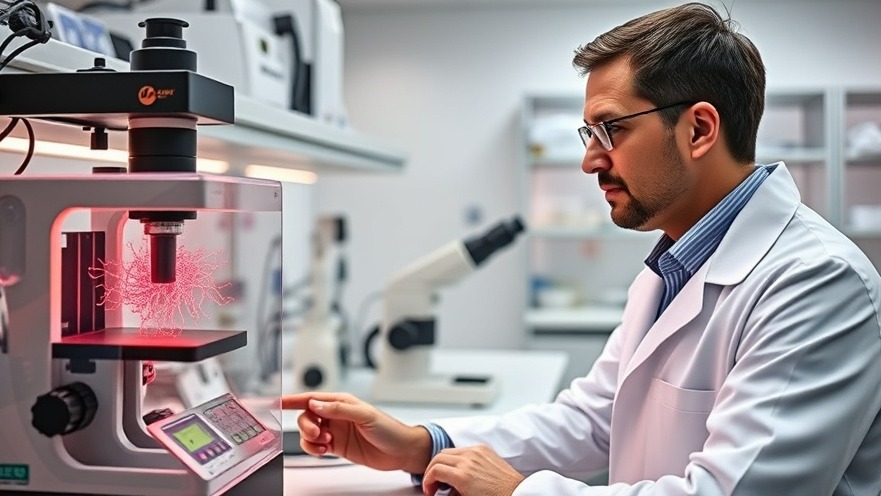
Advancements in Motor Neuron Research
In recent years, STEM cell technology has initiated remarkable progress in medical research, especially concerning neurodegenerative diseases like Amyotrophic Lateral Sclerosis (ALS). ALS affects motor neurons—nerve cells responsible for muscle control—ultimately leading to debilitating muscle weakness and paralysis. While treatments capable of reversing the disease remain elusive, innovative techniques like 3D bioprinting offer hope for developing new therapies.
3D Printed Motor Neuron Organoids: A Game Changer
The latest study from Uppsala University has made headlines by demonstrating the feasibility of creating motor neuron organoids using 3D printing technology. These organoids—miniaturized and simplified versions of human organs—can be developed directly from a patient's skin cells cultured into motor neuron progenitors. This innovative method presents an exciting avenue for precision medicine, allowing researchers to test potential drug therapies tailored to individual patients' genetic profiles.
Detailed Insights into the 3D Bioprinting Process
The process involves layering human stem cells with a soft gelatin to form a bio-ink. By employing a 3D printer, scientists can precisely fabricate the tissue architecture, enhancing the growth and survival of crucial nerve fibers within the organoids. Unlike previous experiments where neuron growth was restricted to the surface, this process enables neurites to extend throughout the bioscaffold, significantly improving the organoid's functionality and replication of human tissue.
Exploring the Importance of Patient-Centric Research
By utilizing skin cells from ALS patients, researchers ensure the construction of organoids that closely mirror the specific neurodegenerative pathology of the individual's condition. This technology heralds a substantial shift in biomedical research—moving beyond generic models to personalized, patient-specific examinations. Health practitioners and researchers can now begin to ask crucial questions about how treatments will work for distinct patient profiles, paving the way for more effective therapeutic approaches.
Future Implications for ALS Treatment
The significance of this research exponentially extends beyond laboratory walls. If trials prove successful, the ability to experiment on these patient-derived organoids could expedite the discovery of new drugs, enhancing hope for individuals affected by ALS and similar conditions. As physicians looking to provide the best possible care for your patients, keeping an eye on emerging technologies in biomedical research and treatment options will increasingly pay dividends.
Potential Ethical Considerations of Bioprinted Organoids
While the promise of organoid technology is significant, it does not come without ethical considerations. As the capabilities of bioprinting evolve, practitioners and researchers alike must remain cognizant of the ethical implications of using patient-derived cells for research and treatment. Further work is needed to establish stringent guidelines and best practices, ensuring that patient rights and safety remain at the forefront as this technology proliferates.
Conclusion: Adapting to Innovations in Health and Medicine
As advancements in healthcare technology continue to revolutionize treatment strategies, staying informed about innovations such as bioprinted organoids will be essential for health practitioners. Not only does this knowledge empower you to provide cutting-edge care, but it also prepares you to navigate the evolving landscape of medical treatment paradigms effectively. Embrace this transformative age of precision medicine, where tailor-made solutions for individual patients might very well rewrite the narrative of diseases such as ALS.
Stay connected with ongoing research and clinical trials in this field to offer your patients the latest and most relevant treatment options.
 Add Row
Add Row  Add
Add 






Write A Comment